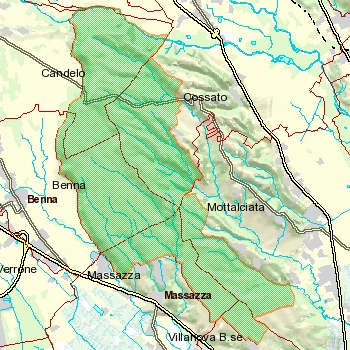|
Candelo-Cossato (Biella)- Baraggia
|
|
|
Show to visit in the Biella area: |
  The term "baraggia" refers to a partially wooded area with more or less sparse specimens of oaks, birches, hornbeams, with brushwood undergrowth, which once extended over the marginal terraces of the Piedmontese plain from Biella to the Ticino river. The aspect of the landscape thus comes to be somewhat similar to that of a savannah, even though the Alps in the background remind you of where you really are. The term "baraggia" refers to a partially wooded area with more or less sparse specimens of oaks, birches, hornbeams, with brushwood undergrowth, which once extended over the marginal terraces of the Piedmontese plain from Biella to the Ticino river. The aspect of the landscape thus comes to be somewhat similar to that of a savannah, even though the Alps in the background remind you of where you really are.
The baraggia of Candelo and Cossato are both part of the Natural Reserve of the Baragge, a nature reserve with regional management that extends including municipalities of the provinces of Biella, Novara and Vercelli (Piedmont).
The vegetation typical of the environment of the baraggia consists of grasslands and moors with a prevalence of tall grasses (the molinias), of calluna, as well as, more sporadically, of eagle fern.
The whole is dominated by imposing tall more or less isolated trees: oaks in the Baragge of Biella and Vercelli; sometimes white hornbeam in the more wooded areas of the valley bottom; or birch trees in the baragge of Novara (Pian Rosa).
Note that there are also many skeletons of dead trees, due to the fact that the soil often becomes so soaked with water that it suffocates the roots, especially beyond a certain depth.
The landscape described constitutes a phase of degradation of pre-existing oak woods, gradually reduced due to repeated cuts; the aspect of land with a rare arboreal cover has been maintained over time thanks to fires, grazing and mowing. These are therefore not purely natural environments: their structure and composition as well as their conservation are closely linked to forestry, agriculture and livestock.
In addition to the plant species mentioned above, constituting the main "backbone" of the baragge vegetation, it is possible to find others, more local and uncommon: particularly interesting as it is typical of very cold climates and the ice age wreck is the siberian iris (Iris sibirica); the golden lily (Hemerocallis lilio-asphodelus = H. flava), considered preglacial and traceable in humid and shady environments, and the marsh gentian (Gentiana pneumonanthe) typical of wet peaty meadows and molinia meadows.
Also interesting are the bog and marsh ecosystems with some rare aquatic plants such as sphagnum (Spagnum spp.), oblong-leaved sundew (Drosera intermedia), characteristic for its ability to capture and digest insects that are placed on it, and brown beakrush (Rhynchospora fusca).
Among the wild animals birds are to take most advantage of this peculiar and now rare environment of the plains that alternates with prairies and woods; many species are also favored by the nearby presence of agricultural fields and especially by rice fields, which they reach to feed, using the baraggia as a shelter area for day and night rest. Among the species reported there are, in particular, the European honey buzzard (Pernis apivorus), the red-backed shrike (Lanius collurio), both nesting, in addition to the brown kite (Milvus migrans), the red kite (Milvus milvus) and the tawny pipit (Anthus campestris) .
As far as reptiles and amphibians are concerned, noteworthy are: the aesculapian snake (Zamenis longissimus), the agile frog (Rana dalmatina), the Italian tree frog (Hyla intermedia) and the Italian crested newt (Triturus carnifex).
Many invertebrates are also present. In the course of a short visit it was in fact possible to take numerous pictures of butterflies, spiders and other arthropods, including the argiope visible on this page.
Unfortunately (or fortunately?) an important part of the reserve is owned by the army, which uses it to carry out exercises. If the latter in themselves are certainly not healthy to the natural environment, the presence of the military has however prevented, compared to adjacent areas, the overbuilding. On the other hand, the limitations imposed on certain human activities, such as grazing, have meant that tree species tend to take the upper hand within the unstable ecological structure of the baraggia.
A part of the baraggia is therefore fenced and not accessible as a military area. In other parts there are signs that seem to indicate prohibition of access, but access is in reality currently permitted (on foot or by bicycle) on Saturdays, Sundays and public holidays.
Categories: Places of naturalistic value of landscape value
45.5187953,8.1439396 |
Baraggia: Further pictures in the section Photography |